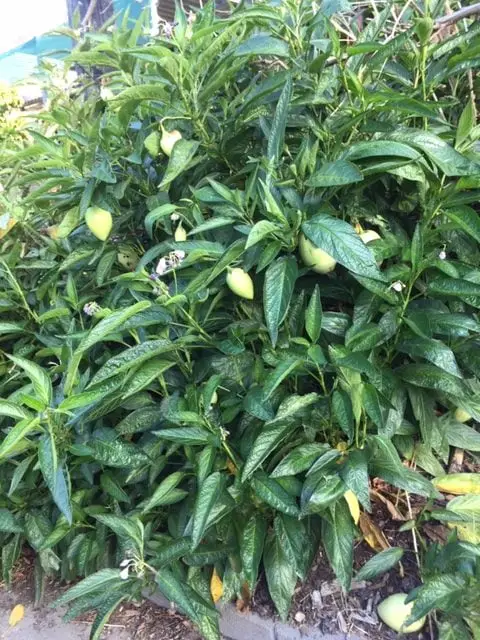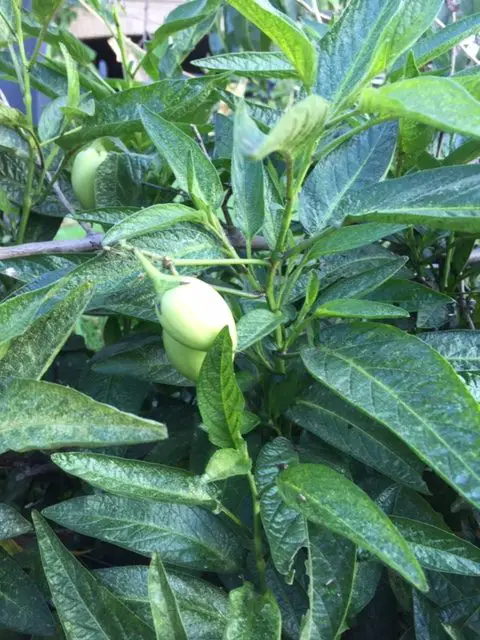What Does A Pepino Taste Like? Pepino is an underappreciated fruit in the western world. It originated in South America where it still makes a regular appearance at markets in Chile, Peru, and Colombia. However, because it is difficult to transport without damaging the fruit it has limited commercial appeal in many regions, but has a lot of advantages for the home gardener and is worth considering for your yard.
The flavor of a Pepino is best described as a cross between a Cucumber and Cantaloupe. Its consistency is similar to that of a Cantaloupe in that it is relatively juicy but the flavor is not as sweet as a Cantaloupe, but definitely sweet enough to be considered a fruit. It is slightly smaller than a mango in most cases but does bruise relatively easily.
The fruit can be eaten directly from the plant by itself with the flesh and the skin being edible, though the skin can become a little tough later in the season. It ideal being eaten by itself and is quite suitable for use in a fruit salad. It can also be used in savory dishes, salsas, chutney and sauces.
How To Grow Pepino
The Pepino plant is a small perennial shrub that reaches a height and width of 3 to 4 ft (1 to 1.2m). It is a deciduous plant that is self-fertile which means that only one plant is required to produce fruit.
The plants are suitable for growing zone 9 or higher but do best in warm environments that are frost-free. If exposed to frost the leaves of the plant will blacken and die back, however, in early spring the plant will recover quickly.
If you live in a climate below zone 9 Pepinos can be grown in containers however they must be protected from freezing conditions by being brought inside. It is advisable that the plant not be put outside again, in spring, until the risk of frost has passed.

As the plant is in the Solanaceae family along with potatoes and tomatoes, they prefer similar soil conditions. These are rich well-drained soil that is slightly acidic, a pH of 6.5 is ideal. However, I have personally found that Pepino is quite tolerant of a range of soil conditions.
Pepino’s are best planted in Mid Spring when the weather is warming up. At this time of year, they are often available as tube stock but there are often more mature plants available as well.
As the plant grows relatively quickly I would recommend purchasing the tube stock, if you have a choice, as costs a lot less and the larger plant is unlikely to advance fruit production very much.
To plant the Pepino dig a hole that this approximately twice the depth of the pot the plant came in. Position the plant in the hole ensuring that the plant is at the same depth as the plant was in the original pot and then backfill the hole with soil. Press the soil down with your heel to ensure that it is firm and there are no air pockets around the rootball.
Water the plant in well ensuring that the ground has thoroughly saturated the cover the surrounding soil with organic mulch to maximize the retention of the moisture. When placing the mulch around the base of the plant ensure that it does not come in direct contact with the stem of the plant to avoid any risk of collar rot.
In the first season ensure that the plant is regularly watered to avoid any chance of the plant becoming dehydrated. In subsequent seasons when the root system is developed the plant will be able to tolerate periods of dry much more readily. However, in periods of dry the plant will always benefit from being watered.
Once the plant is established ongoing maintenance is minimal, the plant usually only requires feeding in Spring if you are using a slow-release fertilizer, however, if the fertilizer is a conventional one like pelletized manure an additional application in summer is also recommended.
The pruning required for the plant is minimal as its size is limited. However, if you want to maintain a neat shape it is advisable to tip prune the plant in winter when the plant is dormant. Generally, I have found that the plant is extremely forgiving with respect to pruning and will recover quickly from any pruning mishaps.

When To Harvest Pepino
Pepinos will begin to ripen in late summer and in Autumn. The fruit will initially start out green and then will begin to yellow additionally the purple markings on the fruit will become more pronounced.
To test if the fruit is ready squeeze the Pepino gently, if there is a little give in the fruit and there is also a slight melon-like aroma it is ready to harvest.
It should be noted that in some cases the green fruit may fall off the shrub prematurely due to the weight of the fruit. This can be taken inside and allowed to ripen indoors in a similar fashion to a tomato.
Once ripe Pepinos will store for up to 3 to 4 weeks in a refrigerator provided that the fruit has not been bruised or damaged in any way.
How To Propagate Pepino
Pepino plants are very easy to propagate, they will grow readily from cuttings. The best time to take cuttings in early spring just before the weather improves. At this time of year, the plant will not have any foliage, and sections of the stem that are 4 to 6 inches long are ideal for taking as cuttings.
Once the cutting has been taken retrim the bottom of the stem at a 45-degree angle to maximize the surface area of the exposed cut. It is advisable if you have rooting hormone to dip the bottom of the cutting in it before planting it in a pot. The rooting hormone is not absolutely essential to get a cutting started however it will improve your strike rate with cuttings, to see the latest price click here to visit Amazon.
When planting the cutting in the pot it is best to place 4 or 5 cuttings around the edge of the pot because it will be slightly warmer than the center of the pot. At this stage, it is important to keep the pot moist by watering it regularly.
The cutting will take several weeks to develop a root system and begin to create new top growth. Once this occurs it is advisable to transplant the new plants into individual pots for an additional few weeks before planting them into the garden.
